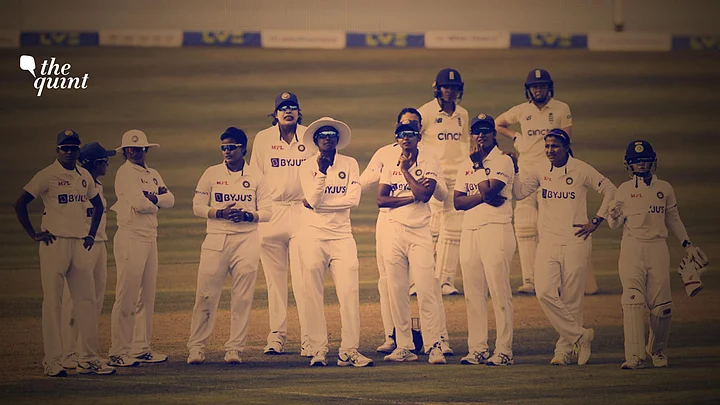Last week in Bristol, the Indian women’s cricket team, most of them, found themselves in unchartered territory while playing a Test match in England. A display of immense grit and a stomach for a fight helped secure a positive result while staring down the barrel, giving the ever-improving team a boost in morale.
And while the players let their emotions flow in their own ways, one was left wondering how it would have been if there was another Test in a matter of days. What makes the performance even more memorable is that this was their first Test in 2,401 days. The last time they played a Test was in 2014, which was after a gap of 8 years.
In 4 days, a new generation of India cricketers showed they can hold their own in whites. Out of the 5 Indian debutants, 3 hit fifties while Shafali, who became the first woman to hit three sixes in a Test, made the format her own.
Which then raises the question from the point of view of a follower, and there’s been quite a few additions to that crowd, how soon will there be a chance to see the team in the whites once again? There is not going to be an easy way to ignore them.
“These girls have shown that even with the lack of practice with the red ball or in the longer format, they can stand up and perform for India,” Mithali Raj said after the match.
India’s next Test, their first under lights, in Australia begins on 30 September. The last time these two teams played a Test, Australia won in Adelaide (2006), incidentally also the last time the Raj’s side lost.
"It's good to have the Test match in a series. We (already) had the one-dayers and the T20Is. Maybe in the coming years it might also lead to a World Test Championship [for women]. You never know. This is just the beginning. I hope we continue to have bilateral series where all three formats are there," Raj said in Bristol.
What Happened in the Match?
After England scored 396 in their first innings, India started off in fine fashion as Smriti Mandhana and one of five debutantes Shafali Verma piled on a massive 167-run stand, where one could have easily mistaken them for seasoned Test cricketers.
However, once the openers were back in the hut, India’s batting collapsed like a house of cards, and Mandhana and Verma were back out in the middle.
There would be another collapse in the second innings as England’s experienced bowlers proceeded to tighten the noose.
A couple of debutantes, Sneh Rana and Taniya Bhatia, however had other plans as they responded with an astonishing rearguard effort, a stand that saved the match and had fans sitting on the edge of their seats, wanting more, yearning for Day 5 in a four-day game.
"Psychologically, I think, it's a big boost (managing a draw after the fightback and splitting the points)," the skipper added. "This draw will also help the Indians because they take a lot of confidence from here that there are not just one or two match-winners but they themselves, if they put their mind to it, can be the match-winners for India.”
Let’s Hit Reboot
On the evidence of it, the Indian women’s cricket team can more than handle themselves in the longest format of the game. A prime example is Shafali, who was considered not ready for ODI cricket in South Africa but wound up as the highest scoring Indian in Bristol.
But to win that crucial phase in a Test match specially, the Indian team very simply needs more playing time which would necessarily have to be competitive in nature. No amount of training in simulated situations match up to being in the middle – practice they say makes one perfect!
Having not played the longest format for the best part of a decade and been away from competitive action for 364 days before the South Africans visited, securing the draw was no mean feat for Raj’s side.
Confident and ready to take on the world, the Ramesh Powar coached side has made a very credible defense in their demand for more Tests to feature on the calendar.
What Next?
For the Raj-led team, their next Test assignment will be in Australia and yet again they will have another new aspect of the game to get used to – the pink ball.
"I know it's a pink-ball Test (in Australia)... But the mental space that these young girls will be in after today's (19 June) performance will have a very positive impact moving into (our preparation) for the pink-ball Test," she said.
While one can be quite sure about the fact that the team will prepare to the best of their abilities, question marks about playing the format remain, especially with ODI World Cup in New Zealand beginning in the first week of March.
This is where Raj and co need the administrators to step up – will the former captain, Sourav Ganguly, occupying the top post in Indian cricket, respond in the affirmative?
While unlike in the men’s game, the longer format isn’t as prominent in the women’s calendar, the ICC on their part gave the nod for Test and ODI status to all Full Member women's teams in April.
‘Gimme hope Jo'anna , 'Fore the morning come.’
